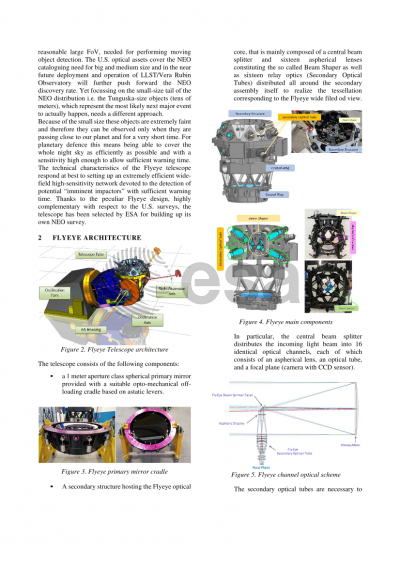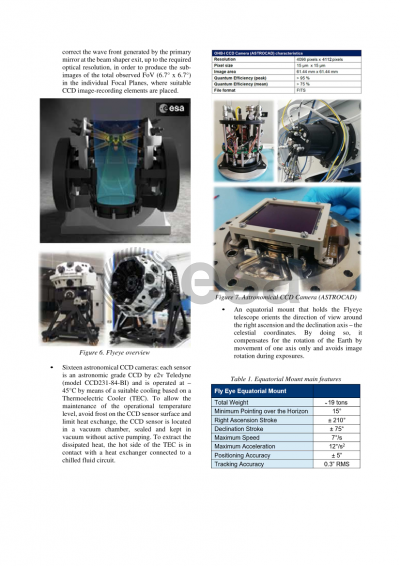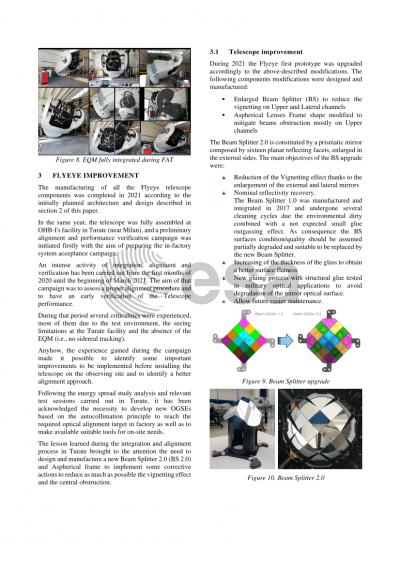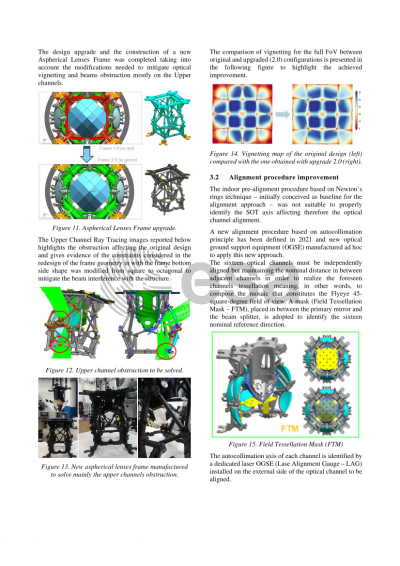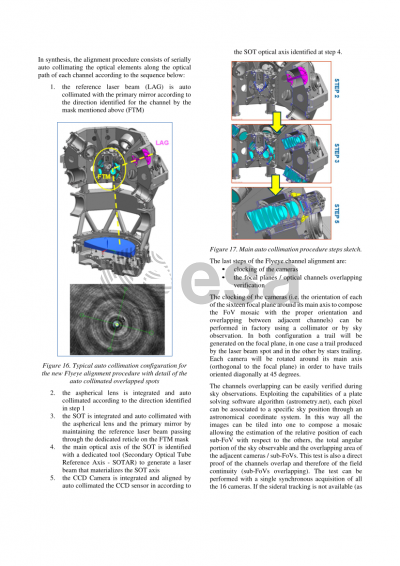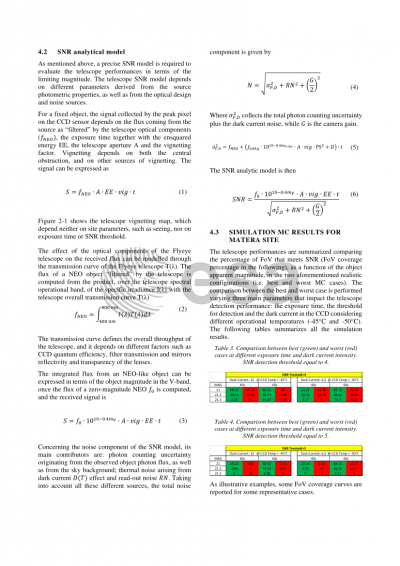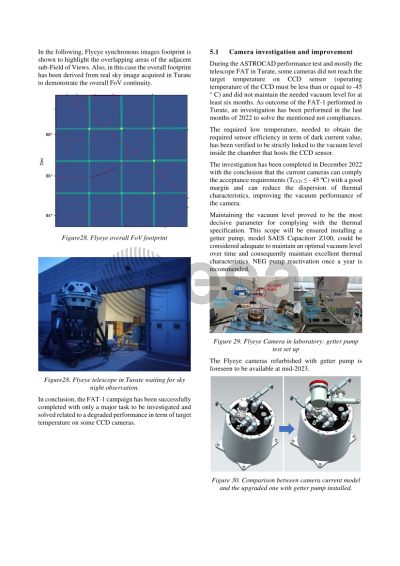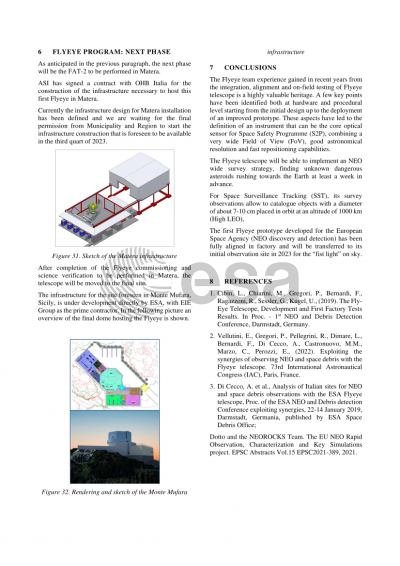Document details

Abstract
The integration and deployment of ESA’s NEO Survey Telescope, the so-called Flyeye Telescope, based on innovative technology conceived by OHB-Italia, is in progress.
The Flyeye Telescope will allow a wide survey strategy, which consists of scanning most of the visible sky several times per night to detect and track NEO objects, and so to mitigate the possible hazards due to Near Earth Asteroids.
The Flyeye design principle consists of splitting the overall Field of View (FoV) of about 45 square degrees in to sixteen sub-FoVs, followed by groups of correcting elements used to control the image aberrations. This innovative telescope solution enables the implementation of a modular and compact design, constituted of 16 identical optical channels which share a common spherical primary mirror of 1.2 meters in diameter. The image of the entire FoV is projected, without gaps, onto sixteen 4k x 4k single-chip CCD cameras, with a pixel scale of 1.5 arcsec per 15 μm pixel size.
The Flyeye architecture is completed by an Equatorial Mount (EQM). The Flyeye telescope and the EQM are assembled and tested in two different facilities, and later integrated at the observatory site.
The EQM has successfully passed all the in-factory verifications and has been upgraded during 2021. The control software now includes a feature named “forbidden region” which prevents the EQM from pointing below a set elevation angle to avoid the risk of the primary mirror overturning. Currently the EQM is ready for dismounting and packaging as soon as the observation site availability date are confirmed.
During 2021 the Flyeye system has been further improved in terms of opto-mechanical design and performance optimization. A new alignment procedure, based on autocollimation of all the optical elements of each optical path has been developed, and dedicated optical ground support equipment manufactured.
During 2022 the sixteen optical channels of the Flyeye telescope have been aligned, and the astronomical cameras developed by OHB-I tested and integrated onto the secondary optics. The in-factory acceptance of the Flyeye telescope has been almost completed with the execution of functional and software tests. As part of the tests, preliminary sky observations have been performed at the OHB-I facility in Turate, to demonstrate in the overall continuity of the FoV by measuring the overlap between adjacent channels.
The first phase of the Flyeye program has been nearly completed, with the Flyeye system close to its final in-factory acceptance and ready for the shipment to the installation site. Considering the seeing limitations at OHB-I facility in Turate, and the lack of a suitable tracking mount, it is not possible to fully verify the optical performance in factory. Therefore, an intermediate acceptance campaign is foreseen to take place in mid 2023 at the ASI Space Geodesy Center located in Matera, Italy. This will permit both extensive testing of telescope performance for NEO detection at a logistically ideal site, and testing of possible applications for space surveillance in a realistic environment.
In the meantime, ESA will prepare the observation site for final installation of the complete Flyeye observatory on the top of Monte Mufara near Palermo, Italy.
Preview

